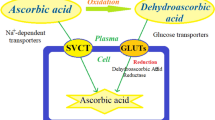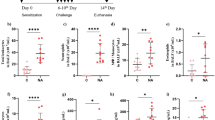Abstract
This study was undertaken to estimate the effect of dietary high oleic acid oil (OA) on 4-(methylnitrosamino)-1-(3-pyridyl)-1-butanone (NNK)-induced lung tumorigenesis in mice. Diet containing 10% oil was fed to mice through experimental periods. On day 30 after NNK injection (100 mg/kg body weight, i.p.), the treatment increased the level of prostaglandin E2 (PGE2) as well as proliferating cell nuclear antigen, a marker of cell proliferation in a high linoleic acid oil (LA)-fed group but not in an OA-fed group. The NNK treatment also induced the activation of an extracellular signal-regulated kinase (Erk) cascade (Erk, Mek and Raf-1) in an LA-fed group. On the other hand, OA feeding abolished the NNK-induced activation of the Erk cascade. In conjugation with these events, OA feeding reduced lung tumor incidence and tumor multiplicity (percentage of mice with tumors) in mice compared with LA feeding at the 20th experimental week. These results suggest that OA suppresses lung tumorigenesis and that this suppression is correlated with the inhibition of PGE2 production and inactivation of the Erk cascade.
Similar content being viewed by others
Abbreviations
- Erk:
-
extracellular signal-regulated kinase
- LA:
-
high linoleic acid sunflower oil
- NNK:
-
4-(methylnitrosamino)-1-(3-pyridyl)-1-butanone
- OA:
-
high oleic acid peanut oil
- PCNA:
-
proliferating cell nuclear antigen
- PGE2 :
-
prostaglandin E2
- RIPA:
-
radioimmunoprecipitation assay
References
Hecht, S.S. (1994) Metabolic Activation and Detoxification of Tobacco-Specific Nitrosamines—A Model for Cancer Prevention Strategies, Drug. Metab. Rev. 26, 373–390.
Hoffmann, D., Brunnemann, K.D., Prokopczyk, B., and Djordjevic, M.V. (1994) Tobacco-Specific N-Nitrosamines and Areca-Derived N-Nitrosamines: Chemistry, Biochemistry, Carcinogenicity, and Relevance to Humans, J. Toxicol. Environ. Health 41, 1–52.
Hoffman, D., and Hecht, S.S. (1985) Nicotine-Derived N-Nitrosamines and Tobacco-Related Cancer: Current Status and Future Directions, Cancer Res. 4, 935–944.
Belinsky, S.A., Devereux, T.R., Maronpot, R.R., Stoner, G.D., and Anderson, M.W. (1989) Relationship Between the Formation of Promutagenic Adducts and the Activation of the K-ras Protoonocogene in Lung Tumors from A/J Mice Treated with Nitrosamines, Cancer Res. 49, 5305–5311.
Jackson, E.L., Willis, N., Mercer, K., Bronson, R.T., Crowley, D., Montoya, R., Jacks, T., and Tuveson, D. (2001) Analysis of Lung Tumor Initiation and Progression Using Conditional Expression of Oncogenic K-ras, Gene Develop. 15, 3243–3248.
Malkinson, A.M. (1992) Primary Lung Tumors in Mice: An Experimentally Manipulable Model of Human Adenocarcinoma, Cancer Res. 52, 2670s-2676s.
Cohen, L.A., Thompson, D.O., Maeura, Y., Choi, K., Blank, M.E., and Rose, D.P. (1986) Dietary Fat and Mammary Cancer. I. Promoting Effects of Different Dietary Fats on N-Nitrosomethylurea-Induced Rat Mammary Tumorigenesis, J. Natl. Cancer Inst. 77, 43–51.
Reddy, B.S. (1994) Chemoprevention of Colon Cancer by Dietary Fatty Acids, Cancer Metastasis Rev. 13, 285–302.
Fortes, C., Forastiere, F., Anatra, F., and Schmid, G. (1995) Consumption of Olive Oil and Specific Food Groups in Relation to Breast Cancer Risk in Greece, J. Natl. Cancer Inst. 87, 1020–1021.
Landa, M., Frago, N., and Tres, A. (1994) Diet and the Risk of Breast Cancer in Spain, Eur. J. Cancer Prev. 3, 313–320.
Taioli, E., Nicolosi, A., and Wynder, E.L. (1991) Possible Role of Diet as a Host Factor in the Aetiology of Tobacco-Induced Lung Cancer: An Ecological Study in Southern and Northern Italy, Int. J. Epidemiol. 20, 611–614.
Smith, T.J., Yang, G.Y., Seril, D.N., Liao, J., and Kim, S. (1998) Inhibition of 4-(methylnitrosamino)-1-(3-pyridyl)-1-Butanone-Induced Lung Tumorigenesis by Dietary Olive Oil and Squalene, Carcinogenesis 19, 703–706.
Newmark, H.L. (1997) Squalene, Olive Oil, and Cancer Risk: A Review and Hypothesis, Cancer Epidemiol. Biomarkers Prev. 6, 1101–1103.
Bennett, A., Del Tacca, M., Stamford, I.F., and Zebro, T. (1977) Prostaglandins from Tumors of Human Large Bowel, Br. J. Cancer 35, 881–884.
Reddy, B.S., and Sugie, S. (1998) Effect of Different Levels of Omega-3 and Omega-6 Fatty Acids on Azoxymethane-Induced Colon Carcinogenesis in F344 Rats, Cancer Res. 48, 6642–6647.
Yano, T., Yano, Y., Uchida, M., Murakami, A., Hagiwara, K., Otani, S., and Ichikawa, T. (1997) The Modulation Effect of Vitamin E on Prostaglandin E2 Level and Ornithine Decarboxylase Activity at the Promotion Stage of Lung Tumorigenesis in Mice, Biochem. Pharmacol. 53, 1757–1759.
Yano, T., Yano, Y., Nagashima, Y., Yuasa, M., Yajima, S., Horikawa, S., Hagiwara, K., Kishimoto, M., Ichikawa, T., and Otani, S. (1999) Activation of Extracellular Signal-Regulated Kinase in Lung Tissues of Mice Treated with Carcinogen, Life Sci. 64, 229–236.
Englaro, W., Rezzonico, R., Durand-Clement, M., Lallemand, D., Ortonne, J.P., and Ballotti, R. (1995) Mitogen-Activated Protein Kinase Pathway and AP-1 Are Activated During cAMP-Induced Melanogenesis in B-16 Melanoma Cells, J. Biol. Chem. 270, 24315–24320.
Hauman, B.F. (1998) Peanuts Find Niche in Healthy Diet, inform 9, 746–752.
Knauft, D.A., Gorbet, D.W., and Norden, A.J. (1995) SunOleic 95R Peanut, Florida Agricultural Experiment Station Circular, Miami, S400.
Yano, Y., Yano, T., Uchida, M., Murakami, M., Ogita, T., Ichikawa, T., Otani, S., and Hagiwara, K. (1997) The Inhibitory Effect of Vitamin E on Pulmonary Polyamine Biosynthesis, Cell Proliferation and Carcinogenesis in Mice, Biochim. Biophys. Acta 1356, 35–42.
Yamaki, K., and Oh-Ishi, S. (1989) Fluorometric High-Performance Liquid Chromatographic Analysis of Prostaglandin (PG) Metabolites: Application to the Catabolism of PGE2 and PGF2α in Rat and Rabbit Kidney Homogenates, J. Pharmacobiodyn. 12, 74–79.
Bondzi, C., Grant, S., and Krystal, G.W. (2000) A Novel Analysis for the Measurement of Raf-1 Kinase Activity, Oncogene 19, 5030–5033
Said, T.K., and Medina, D. (1995) Cell Cyclins and Cyclin-Dependent Kinase Activities in Mouse Mammary Tumor Development, Carcinogenesis 16, 823–830.
Yano, T., Yajima, S., Hagiwara, K., Kumadaki, I., Yano, Y., Otani, S., Uchida, M., and Ichikawa, T. (2000) Vitamin E Inhibits Cell Proliferation and the Activation of Extracellular-Regulated Kinase During the Promotion Phase of Lung Tumorigenesis Irrespective of Antioxidative Effect, Carcinogenesis 21, 2129–2133.
Kumar, R., Sukumar, S., and Barbacid, M. (1990) Activation of ras Oncogenes Preceding the Onset of Neoplasia, Science 248, 1101–1104.
Yano, T., Yajima, S., Nakamura, T., Horikawa, S., Kishimoto, M., and Ichikawa, T. (1998) The Inhibitory Effect of Vitamin E on 4-(methylnitrosamino)-1-(3-pyridyl)-1-Butanone-Induced DNA Injury and the Fixation of the DNA Injury in Mouse Lungs. Naunyn Schmiedebergs Arch. Pharmacol. 358, 275–278.
Heasley, L.E., Thaler, S., Nicks, M., Price, B., Skorecki, K., and Nemenoff, R.A. (1997) Induction of Cytosolic Phospholipase A2 by Oncogenic ras in Human Non-Small Cell Lung Cancer, J. Biol. Chem. 272, 14501–14504.
Yano, T., Zissel, G., Muller-Qernheim, J., Shin, S.J., Satoh, H., and Ichikawa, T. (2002) Prostaglandin E2 Reinforces the Activation of Ras Signal Pathway in Lung Adenocarcinoma Cells via EP3, FEBS Lett. 518, 154–158.
Roche, E., Buteau, J., Aniento, I., Reig, J.A., Soria, B., and Prentki, M. (1999) Palmitate and Oleate Induce the Immediate-Early Response Genes c-fos and nur-77 in the Pancreatic β-Cell Line INS-1, Diabetes 48, 2007–2014.
Wickramasinghe, N.S., Jo, H., McDonald, J.M., and Hardy, R.W. (1996) Stearate Inhibition of Breast Cancer Cell Proliferation. A Mechanism Involving Epidermal Growth Factor Receptor and G-Proteins, Am. J. Pathol. 148, 987–995.
Author information
Authors and Affiliations
Corresponding author
About this article
Cite this article
Yamaki, T., Yano, T., Satoh, H. et al. High oleic acid oil suppresses lung tumorigenesis in mice through the modulation of extracellular signal-regulated kinase cascade. Lipids 37, 783–788 (2002). https://doi.org/10.1007/s11745-002-0961-8
Received:
Revised:
Accepted:
Issue Date:
DOI: https://doi.org/10.1007/s11745-002-0961-8




